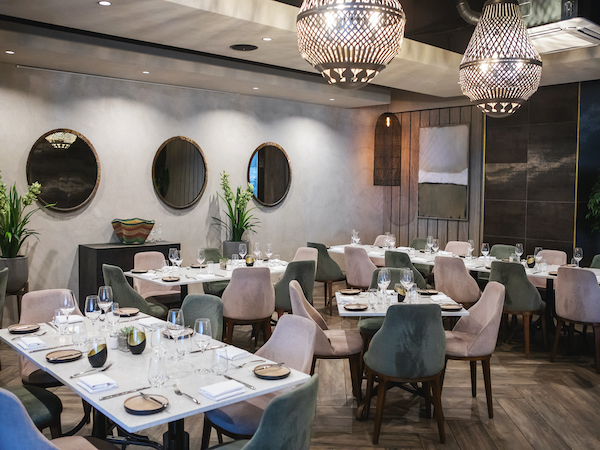News
Why restaurants need to take note of millennial diners
Friday, July 28th, 2017
They’ve made ‘friend’ a verb, they’ve got their own colour (millennial pink), and they’ve taken (self) portraiture to new heights, but what influence does the much-maligned millennial have on restaurant trade?
In other countries, trends analysts have been quick to blame millennial tastes for a change in restaurant fortunes. “Millennials are killing chains like Buffalo Wild Wings and Applebee’s,” claimed an article on Business Insider in May. “Millennials are killing chain restaurants thanks to Instagram,” declared The Next Web in June. In the States, TGI Fridays, Ruby Tuesday and Applebee’s have indeed reported sales slumps, and seen multiple branch closures. But it’s not all doom and gloom – it turns out that 16-24 year olds actually spend more money on food than any other age group. And brands like Chipotle and Panera, which have catered their offering for millennials, have seen spectacular growth, while restaurants producing stunt dishes for Instagram – witness the cronut and the freakshake – have been rewarded with queues out the door.
And while not all restaurants see millennials as their target market, it’s clear that their influence is spreading. After all, even baby boomers have Facebook now. So what – apart from rainbow-coloured doughnuts – do millennials want? And how can restaurants use this information to their advantage?

It’s experiences, not possessions, which millennials are spending their cash on. And that’s actually good news for restaurants. Photo: iStock.
1. Offer a community
The Facebook generation may seem flighty to older segments, but its members are really into loyalty. According to Forbes, millennials are more likely to expect rewards for their loyalty than any previous generation. According to a 2015 study, 56% of American millennials would gladly share their location on an app like Foursquare in exchange for a deal or coupon. They’re also more open IRL (in real life), too: 55% of millennials in the same study said they prefer communal tables. Appealing to the social side of this segment is also about making your restaurant a hospitable, friendly space. This can be achieved by training your staff and building a welcoming team that is empowered to make customers feel special.
2. Tell your story
It’s certainly not new, but this form of marketing speaks to millennials more than any previous generation. Did you start from inside a garage? Is the dessert inspired by your grandmother’s lemon-curd recipe? Include this kind of information in your Instagram captions and on your menu. Speaking to Food Fanatics, restaurant consultant Terry Henry says it’s all about creating a unique identity. “Spice up your food a bit. Add some ethnic dishes. Above all, create something new, something different. Uniqueness will keep them coming back.”
3. Appeal to their values
According to David Burstein, author of a book about the millennial generation, appealing to those born between 1980 and 2000 is all about ethics and values. Consider how your business can positively impact your community, and make your decisions aware that the new generation cares about whether the chickens who laid the eggs in their Benedict were happy.
4. Offer an experience
Millennials are more encumbered by debt, and have less disposable income than their parents. However, according to Goldman Sachs, they are also more likely than any recent generation to live with their parents, leaving them with more disposable income to spend. And while they’re also putting off milestones like marriage and children, they’re spending their disposable income on experiences, not possessions. Instead of buying things like cars, music and luxury goods, they are natives of the sharing economy, using services like Uber, Airbnb and Spotify to share transport, accommodation and music. So yes, they will shell out for that avocado toast – provided it feels like an experience – but you could also consider how your business can work with existing sharing services, and what premium services you can grant access to in your restaurant.
5. Look good online
According to Goldman Sachs, 57% of millennials compare prices in store. They’re also much more likely to check reviews online and, according to one study, discussed by The Independent, 18–35-year-olds spend five whole days a year browsing food images on Instagram, and 30% would avoid a restaurant if their Instagram presence was weak. (Check out our guide to running a good Instagram account here.) This kind of consumer also checks menus online to find prices and see whether a restaurant caters to their tastes. While it’s pretty much impossible to control a reputation online and on all platforms, it is possible to use the information gleaned from online reviews selectively (once you’ve weeded out the trolls), to address recurrent issues. Also, you might want to update your menu and pictures from time to time (*Cough* You can email us at info@eatout.co.za or click on ‘claim your listing’ to update it yourself.)
6. Offer wellness
According to Monitoring The Future, 83% of 12th graders disapproved of smoking, so you might want to think carefully about the relative size of smoking sections of the future. But millennials also see health as something broader than avoiding sickness. Eating healthily and exercising are also very important to them.
Consider adding a section to your menu that caters to clean eating, more veg-focused diners or flexitarians. Also think how you can make your restaurant a destination for those exercising. Do you have space for a bike rack? Could you entice running clubs or cyclists with an early-morning special?
7. Welcome their pets
According to USA today, millennials are more influenced by dogs than marriage or children when purchasing their first home. 33% of respondents in a survey conducted by SunTrust Mortgage cited having room for a dog as one of the top three reasons they would buy property. It’s easy to mock, but have you seen dogs?












